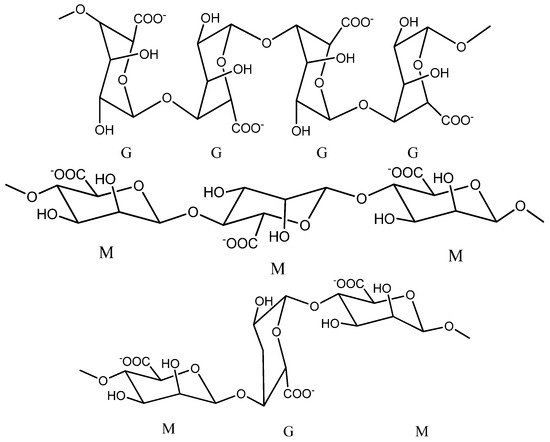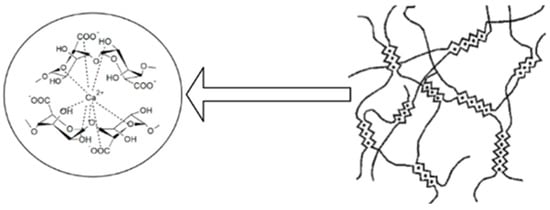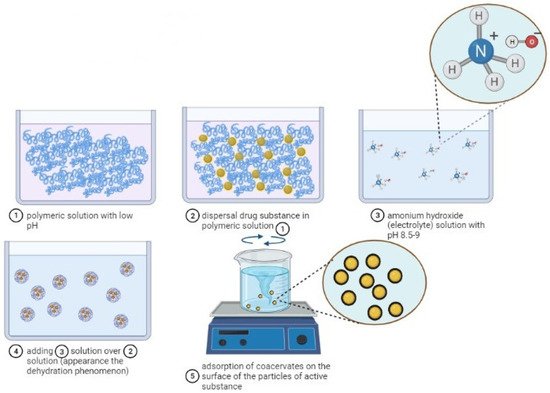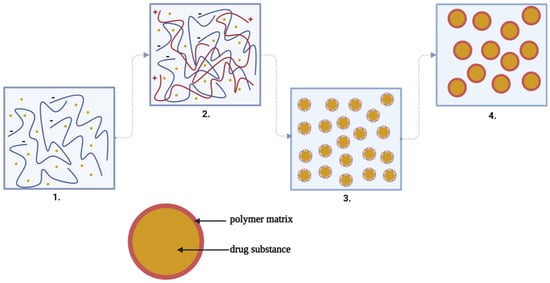The macromolecules of natural origin have attracted the attention of many researchers as essential to protect the structures of unstable drug substances. After analyzing the studies carried out by various authors, researchers found that these molecules are used for both investigational and therapeutic purposes. This requires the design of certain drug delivery formulations knowing the nature of the macromolecule, its target organ, the required dose and the route of delivery. Therefore, researchers consider it important to use sodium alginate to optimize the delivery of drug substances for maximum therapeutic performance in the body after administration.
The macromolecules of natural origin have attracted the attention of many researchers as essential to protect the structures of unstable drug substances. After analyzing the studies carried out by various authors, we found that these molecules are used for both investigational and therapeutic purposes. This requires the design of certain drug delivery formulations knowing the nature of the macromolecule, its target organ, the required dose and the route of delivery. Therefore, we consider it important to use sodium alginate to optimize the delivery of drug substances for maximum therapeutic performance in the body after administration.
- sodium alginate
- microencapsulation
- microparticles
1. Introduction
2. Chemical Structure of Alginate
According to the information of Phillips G.O. and Williams P.A. and of Lee K.Y. and Mooney D.J., until 1958, information about the chemical structure of alginate suggested that sodium alginate is predominantly made up only of β-D-manuronic fractions, but it was later observed that α-L-glucuronic acid fractions are also present in its structure. The ratio in which the two fractions are present in its structure varies according to the natural source from which it was extracted [3][9][13][3,9,13]. Sodium alginate is considered to be a polyanionic copolymer which structurally is the sodium salt of alginic acid, an acid consisting of several successive groups of the two uronic acids: β-D-manuronic acids (M) and α-L-glucuronic (G), linearly linked to each other by 1–4 glycosidic bonds [2][4][5][14][15][16][2,4,5,14,15,16]. It has the chemical formula (C6H7NaO6)n and an average molecular weight of 216.121 g/mol [17]. By a partial hydrolysis reaction in acidic medium, the alginate molecule can be cleaved into three successive fractions: manuronics (MMMMM), glucuronics (GGGGG) and a mixture of manuronic fractions with glucuronics (MGMGMG), as shown in Figure 1 [9][18][9,18].
3. Physico-Chemical Properties of Sodium Alginate
From the physico-chemical point of view, sodium alginate is presented in the form of a solid powder that is white or slightly yellowish and hydrophilic, dissolves easily in water and has the ability to form gels in the presence of divalent ions, all of which make alginate a useful material for the delivery of medicines and cellular immobilization [5][6][5,6]. The physico-chemical properties of alginates (mechanical properties, swelling and diffusion capacity) are influenced by several characteristics: the composition and arrangement of the two groups of uronic acid in the structure, the molecular weight of the polymer, the type of functional groups in the structure and the concentration of the reticular agent used [2][7][20][2,7,20]. The characteristics of alginates may vary depending on the natural source from which it was extracted and the season and the geographical location from which the plant was harvested [6].3.1. Physico-Chemical Properties
3.1.1. Molecular Weight
Commercial sodium alginate has a high molecular weight between 32,000 and 400,000. It has long M and G chains in the structure and a polydispersion index that varies between 1.5 and 3 (Mw/Mn). Studies show that the viscosity of alginate solutions is influenced by the molecular mass and pH of the reaction mass, so the viscosity increases with a decrease in pH and reaches a maximum around pH 3–3.5, because at this value, the carboxyl groups in its structure become protonated and can form hydrogen bonds. Increasing the molecular weight of alginate increases the rate of gelling and the physical properties of gels (tensile strength, elasticity, viscosity). However, sometimes too much of an increase in molecular weight can lead to a very viscous solution of alginate, which is undesirable in certain situations [9][21][22][9,21,22]. For example, in the preparation of alginate hydrogels used as a cell immobilization matrix (in the case of vaccines), if the alginate solutions used are too viscous, the viability of the cells during the hydrogel formation process may be reduced by the high shear forces applied when mixing them with alginate. Cell membranes in general are highly sensitive to mixing, and sometimes strong mixing can cause cell death [23].3.1.2. Solubility
The solubility of sodium alginate in cold water is slower and leads to obtaining a viscous solution. It is insoluble in alcohol, hydroalcoholic solutions with alcohol content above 30%, chloroform and ether [4]. Studies show that its solubility depends on the pH, molecular weight, ionic strength, nature of the ions present in the structure and concentration [24]. The pKa value of guluronic acid is 3.6, while that of manuronic acid is 3.3. Compared to sodium alginate, calcium alginate is insoluble in water and organic solvents, but is soluble in sodium citrate [22].3.1.3. Stability
Sodium alginate is compatible with most anionic substances and with few cationic substances, and it shows higher stability against external factors if it is conditioned in the form of a dry powder than in the form of a solution. With acids, sodium alginate gradually forms a gel of alginic acid at low pH values; at elevated pH values, alginic acid dissolves and restores its original viscosity. In alkaline environment, sodium alginate can withstand short periods of time, since pH values higher than 11 reduce its viscosity. In the short-term, sodium alginate can withstand high temperatures, so it can be sterilized, but in the long term, the high temperature in sterilization can reduce the degree of viscosity [25].3.2. Mechanical Properties
3.2.1. Viscosity
The viscosifying capacity of alginate is dependent on the molecular weight and concentration of the polymer, and gelling (affinity for cations) depends on the amount of glucuronic acid in the structure. Thus, in the structure, the higher the amount of glucuronic acid that is found, the more the solubility of alginate in water and the gelling capacity increases, resulting in a more resistant, viscous, strong and more stable gel [2][5][25][26][2,5,25,26]. According to studies, sodium alginate solutions are not Newtonian fluids but pseudoplastic fluids whose viscosity changes drastically when they are dissolved in water and diluted with water [4]. Studies show that the viscosity of alginate is dependent of temperature. The thermal and viscoelastic properties of alginate films can be studied using differential scanning calorimetry (DSC). DSC studies on various thermosensitive alginate gels obtained in the temperature range between 0 and 100 °C showed low rigidity at high temperature. It appears that at temperatures below 100 °C, the noncovalent bond between the adjacent polymeric groups kept the alginate intact under oscillatory conditions of deformation, but this equilibrium was interrupted by a constant magnetic stirring [2]. Commercially used sodium alginate has varying degrees of viscosity, and the resulting 1% aqueous solutions have viscosities that can vary from 20 to 400 cP (centipoise) and 0.02–0.4 PaS (pascals per second) at 20 °C [22].3.2.2. Mucoadhesion
Alginate has good mucoadhesive properties due to the presence of free carboxyl and hydroxyl groups in the structure. In the physiological environment, electrostatic repulsive forces occur between alginate and mucin due to negative charges of sialic acid, sulfate groups in the mucus structure and anionic carboxylic groups of alginates. This suggests that the bioadhesion between mucin and alginate is achieved through intra- and intermolecular hydrogen bonds. Studies claim that the mechanism of mucoadhesion follows several stages: the first stage consists of intimate contact with the mucosa when wetting and swelling of the polymer occurs, and the last stage consisting in the formation of hydrogen bonds through the processes of interpenetration of the mucin with the polymer chains [6]. This property is an advantage in administration of medication to mucous membranes because it increases the contact time and adhesion of the drug to the site of action and also increases the bioavailability of medicines [4].3.3. Biological Properties
The FDA (Federal Drug Administration) has approved the use of sodium alginate in the food, biomedical and pharmaceutical fields due to its biological properties, i.e., lack of toxicity and immunogenicity, biocompatibility and biodegradability [24].Biocompatibility, Toxicity, Immunogenicity and Biodegradation
Studies shows that sodium alginate can be included as an excipient in various pharmaceutical forms intended for oral administration because it is safe, nontoxic and does not accumulate in the body. Due to its chelating capacity, it can bind to various heavy metals present in the intestine protecting the body from their effects. However, when it is intended to be used in implantology or intravenous administration, the factors that can influence its biocompatibility and immunogenicity should be taken into account, such as the chemical composition (ratio of G/M groups), purification process, nature, quantity and impact of residual contaminants. Many studies claim that the use of commercial alginate by parenteral route can cause fibrosis and immune response. In order for alginate to be safe for the body and to be used in the biomedical field, it must be prepared and purified very carefully by decontamination methods during the extraction process in order to remove all traces of heavy metals, endotoxins, proteins and phenolic compounds with immunogenic potency [24][27][24,27]. The enzymatic degradation of alginate in mammals is not possible due to the absence of alginase, an enzyme involved in the process of undoing the polymer chains, and medium- or high-molecular weight alginates cannot be eliminated renally entirely because they are filtered more slowly by the kidneys. Taking into account the problem of biodegradation, studies show that alginate can be degraded by oxidative way, ionic reticular, etc., if it is subjected to structural changes [24].3.4. Other Properties
3.4.1. Ionic Reticular Capacity of Alginate with Ca2+ Ions
Alginate can form, by ionic reticulation with polyvalent cations, three-dimensional gels which have a rigid, orderly and strong structure. Agulhon P. et al., showed that the reticulation that is made between alginate and alkaline-earth cations is of an electrostatic nature, and that between alginate and the cations of transitional metals, it is covalent. This is due to the interaction of free carboxyl or hydroxyl groups of the G fractions in the alginate structure with bivalent/polyvalent cations under controlled temperature conditions [2][6][7][9][28][2,6,7,9,28]. The affinity of polyvalent ions to alginate is different following the order: trivalent cations > Pb2+ > Cu2+ > Cd2+ > Ba2+ > Sr2+ > Ca2+. Studies show that of the bivalent ions, Ba2+ and Sr2+ can form stronger micro-/nanoparticles of alginate than Ca2+ ions, although Ca2+ ions are the most used even if they do not have the highest interaction power. Ca2+ ions are the most preferred for the development of microparticles because they are the safest for the body, and through reticulation, they form an adequate network of gel of Ca-alginate in mild conditions [6][12][6,12]. The use of Pb2+, Cu2+ and Cd2+ is limited due to their toxicity [6]. In the literature, gelling is presented as an “egg box” type of network that is formed when Ca2+ ions replace the Na+ ions in the alginate structure, binds crosswise and is antiparallel to two alginate molecules [29], as shown in Figure 2.
3.4.2. Complex Coacervation Capacity of Alginate with Chitosan
Coacervation is a process of physicochemical microencapsulation [50] in which two different colloidal phases, one rich in polymeric particles, called the “coacervate phase”, and the other poor or totally devoid of polymeric particles, called the “equilibrium phase”, separate into coacervate microparticles when they come into contact with each other [51][52][53][54][51,52,53,54]. Liquid medicinal substances (in the form of emulsion), solids (in suspension form), hydrophilic or hydrophobic medicinal substances and living cells may be encapsulated in microparticles by the coacervation technology, provided that the active substances are insoluble or very poorly soluble in the polymeric matrix/coating and are compatible with the polymer used in microencapsulation [53]. According to the factor causing the desolvation, the polymeric systems involved in the reaction and the phase separation mechanisms, coacervation can be of two kinds: simple coacervation, which generally occurs in the presence of a single polymer through the dehydration mechanism caused by the addition of an electrolyte/salt/desolvating liquid to the reaction medium, or complex coacervation, which occurs in the presence of two or more incompatible polymers by an electrostatic reaction [52][53][54][55][56][52,53,54,55,56]. By simple coacervation, according to Figure 3, microencapsulated polymeric pharmacokinetic systems can be synthesized as follows: particles of medicinal substances are dispersed in a low-pH polymeric solution. A solution with high pH (8.5–9.0) of ammonium hydroxide, which is strongly hydrophilic, is added to the colloidal system in order to form the baking drops which are then adsorbed to the surface of the particles of the medicinal substance. The process of forming the microspheres is carried out under stirring, with high mixing speed, in order to avoid bonding and the formation of agglomerates, and then filtration. By this method, microparticles with the size ≤10 nm [52][55][57][58][59][52,55,57,58,59] can be obtained.

| Obtained PF | Polymers Used | DS | Advantages of the Method of Complex Coacervation | Ref. |
|---|---|---|---|---|
| MPs | Ch, CMC | Indomethacin | Modified-release PF with few adverse effects were obtained | [62] |
| Ms | Ch, Gelatin B | Tramadol | Reducing the frequency of dosages | [63] |
| NPs | Ch, Na-Alg | Insulin | The possibility of directing the manifestation of the effect to a specific target such as the colon | [67] |
| Mc | Ch, Na-Alg | Amoxicillin | Increased patient compliance | [68] |
| NPs | Ch, Na-Alg | Nifedipine | Obtaining PF with a size appropriate to absorption at GI level | [69] |
| Ms | Na-Alg, Ch | Selenium | Allows one to obtain fast-release PF in phosphate buffer solution (pH = 7.4) | [70] |
| Ms | Ch, Na-Alg | Quercetin | Allows the encapsulation in the PF of some hydrophobic DS | [11] |
| Ms | Ch, Gelatin B | Ketorolac tromethamine | The low degree of crystallinity is an advantage for controlled release | [71] |
| Ms | Na-Alg, Ch | Isoniazid | The type of polymers included in the matrix can extend the duration of release of the DS | [72] |
| Ms | Na-Alg, Gelatin B | Buryti oil | By using this encapsulation method, certain DS of polyphenolic type or volatile oils are protected from attacks of environmental factors | [73] |
| Ms | Na-Alg, Ch | Prednisolone | Rough PF can be obtained, with a similar appearance, wrinkled/smooth at the surface, with a compact structure and large number of folds, stable from temperature, and can be used at normal physiological temperature as delivery systems of the drug | [74] |
| Ms | Na-Alg, Ch | Prednisolone | Avoids the use of toxic reticular chemical agents | [75] |
| Mc | Na-Alg, Gelatin A | Astaxanthin oleoresin | Allows the obtaining of Ms with a high degree of entrapping and release of the embedded ingredients | [76] |
| Mc | Na-Alg, Ch | Triamcinolone | The use of Ch with high molecular weight together with Na-Alg has been observed to lead to Ms of lower sizes, mucoadhesive with better release rates | [77] |
| Mc | Na-Alg, Ch | Nitrofurantoin | Limitation of the occurrence of GI side effects manifested by nausea and vomiting given by certain DS (nitrofurantoin) following oral administration | [78] |
| MPs | Na-Alg, Gelatin B | Ginger volatile oil | Allows one to obtain PF with high stability to light, heat and oxygen | [79] |
| MPs | Gelatin, gum arabic | Lutein | Obtained particle have good stability at light, heat and oxygen | [80] |
| Mc | Gelatin, Na-Alg | Eugenol | If one of the polymers of the matrix is Na-Alg, it can potentiate the antioxidant effect of MPs | [81] |
| Mc | Gelatin B, corn oil, acacia BP 1993, bloom strength 225 | Vit.A palmitate | Allow the incorporation of large amounts of lipophilic drugs | [82] |
| Mc | Ch, karaya gum, paraffin oil, formaldehyde | Diclofenac sodium | It favors the sustained release of the active ingredient from the particulate system | [83] |
| Mc | Na-Alg, HACC | Tea tree | Obtained PF with spherical shape and antimicrobial effect | [84] |
| Nc | Acacia, gelatin | Capsaicin | Obtained spherical and stabile particulate system | [85] |
| Mps | Ch, Na-Alg, CMC | Tanic acid | Could be used in formulations for dental abscess and superficial tissue treating wounds | [86][87][86,87] |
| Mps | I-carrageenan, Ch, gellan | Curcumin | These PF can be destined for oral administration with the colon as the therapeutic target for the controlled drug release | [88][89[88],89] |
| Ms | Na-Alg | Stellaria media | Such microspheres can be destined for oral administration. | [90] |
